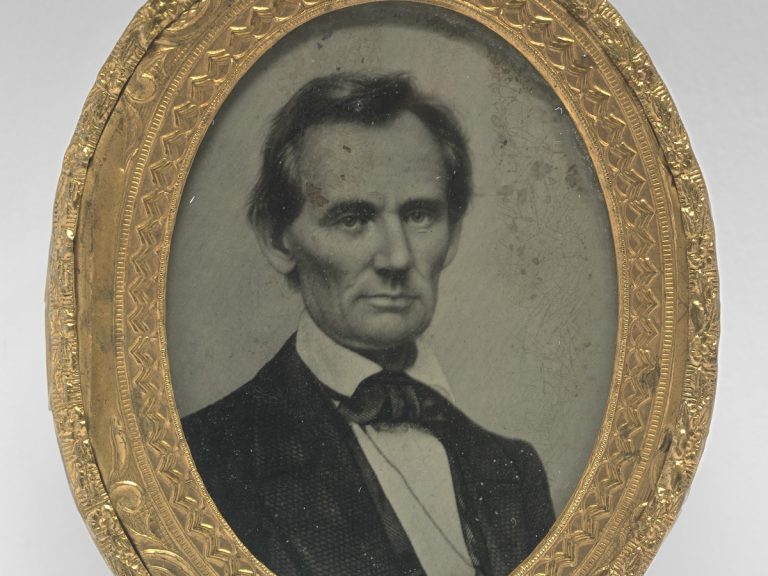
How do you imagine the president? We might think of many ancient presidents as being from a time before photography, but in fact, 39 of the 45 highest-ranking leaders of the United States have been captured by photography. The earliest surviving portrait is an 1843 daguerreotype of our sixth leader, John Quincy Adams, who served from 1825 to 1829. This portrait is one of several on display. Portraying the Presidents: Daguerreotypes and Wet-plate Photographs from the National Portrait Gallerywhich will be on display at the Washington, D.C., museum through June 8 next year, comes just in time for the upcoming election, pitting a felon against a deeply confused old man, and is the latest in our country’s faltering experiment in democracy.
The daguerreotype was the original means of disseminating presidential portraits to voters. Through expensive processes, this technology and its successor, wet-plate photography, provided a way to produce a limited number of identical portraits as the basis for illustrations, campaign materials, and other printed media applications.
The exhibition includes photographic portraits of 11 U.S. presidents, as well as several daguerreotypes of presidents who died before the advent of photography. For example, it includes a portrait of George Washington, who died about 40 years before such portraits became available, using an unfinished 1796 drawing by Gilbert Stuart.


Our eighth president, Martin Van Buren, our 13th, Millard Fillmore, and, of course, our 16th, Abraham Lincoln, are all on display here. A highlight is William Judkins Thomson’s 1858 half-plate wet-plate photograph of Lincoln, taken during a series of debates between the aspiring politician and Democratic candidate Stephen Douglas. Also on display is a campaign badge based on a photo of a clean-shaven Lincoln taken by photographer Matthew Brady, a photo that was crucial to the young lawyer-turned-politician’s public image during the 1860 campaign.
“The vintage daguerreotypes and wet-plate prints in this exhibition are treasures from the Portrait Gallery’s collection,” said Ann Shumard, senior curator of the institution’s photography department, in a press release announcing the exhibition. “They offer visitors a unique opportunity to view some of the earliest photographs of our nation’s presidents.” In fact, the exhibition is just a small sampling of the museum’s vast collection of presidential portraits, which span a wide range of media.

In our image-saturated age, it’s easy to forget that just 150 years ago, portraits were a rare luxury in most homes. The daguerreotype has been phased out as more accessible and affordable photography has emerged, but one artist in the exhibition believes a recent legendary moment in American history needs to be captured with the grandeur of this outdated technology. Modern daguerreotype artist Jerry Spagnoli photographed the inauguration of Barack Obama, the first person of color elected to the nation’s highest office, using a technique that has also photographed some of the first people to hold that office.
On January 20, 2009, the Capitol was packed and the sky was blue, seeming to herald a new era in American politics. We cannot predict what the next election will bring, but it is hard to imagine a moment as hopeful as that one.


